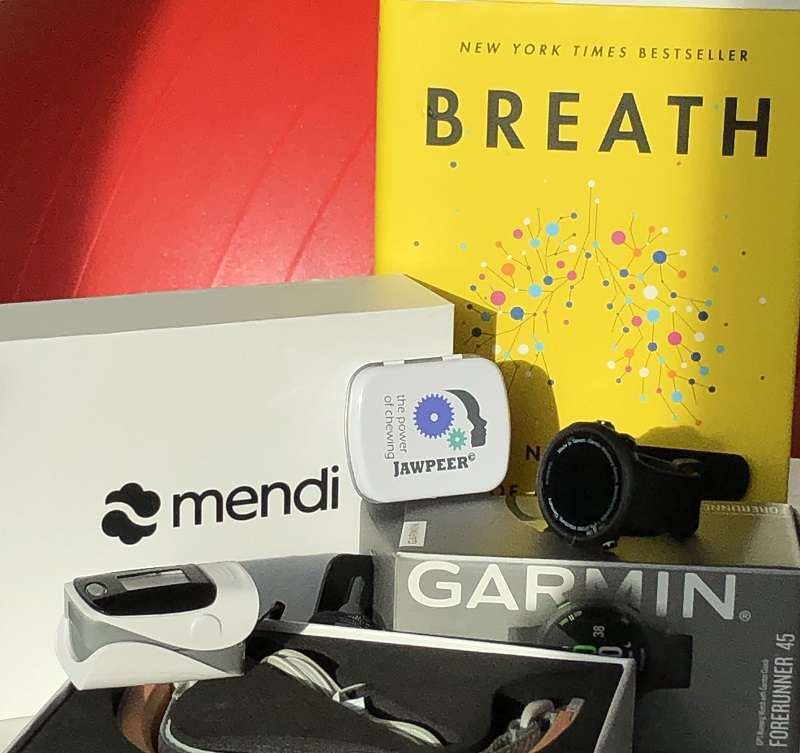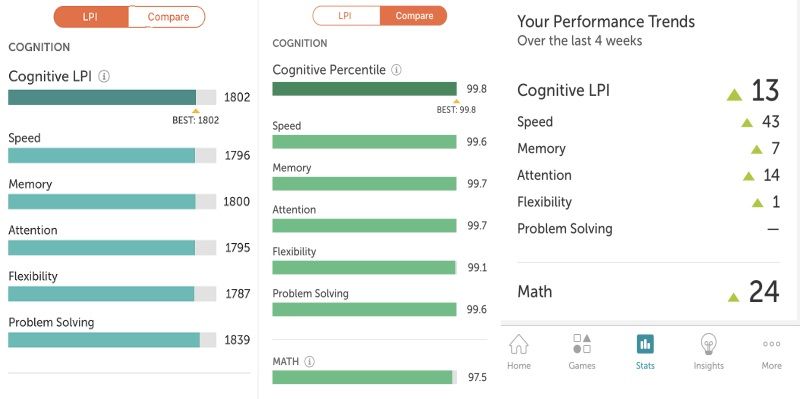
I am responsible for my own development, so I have a personal science toolkit. Besides the mobile with Lumosity and the Excel Sheets, I use a Garmin Watch, Oximeter, Literature, and of course JAWPEER. Mendi’s neurofeedback is a new, interesting tool. My hope is that Mendi’s device makes it easier to optimize my personal goals. I have modest goals. Strive for good health, night sleep, and a well-functioning mind. Mendi claims that their device can enhance brain performance, therefore I will try and explore it.
Breath, Heartbeat, and Deep Brain
Personal Science is about applying quantitative methods to analyze one’s personal health. New technology and knowledge like James Nestor’s bestselling book ‘Breath’ make it possible to learn to know yourself better. Internal systems in your body monitor and regulate your metabolism including breathing, heart rate, blood pressure, and neurotransmitters. Your “superficial” consciousness is not aware of these systems. The deep brain regulates them.
The Outside Brain Monitor Layer
At the core of your nervous system is the Brainstem, the Cerebellum, and the Basal Ganglia. They handle the basic functions, common to all vertebrates. Closer to the Cerebral Cortex are the more human species-specific brain parts that include our ability to communicate. In the last 50 years, communication has exploded. With the help of new communication technology, we have built a new monitoring layer outside the Cerebral Cortex – the Information Society.
Knowledge for Good Rather Than Evil
Information Society is bidirectional. It gives information to you and takes information from you. Body temperature and blood tests inform about your physical status. Surveillance cameras ensure that you follow the laws and rules. Knowledge can be used for good and evil. A dictatorship can monitor the people to frighten and suppress them. Or we can use the new information layer to enhance and liberate ourselves. In this way, a personal science toolkit can be empowering.
Empowered By a Personal Science Toolkit
Overall, globalism moves toward more liberty and individualism. It increases personal freedom and responsibility for one’s own life. Monitor yourself to maximize your knowledge and independence. This is the essence of personal science. With the option of self-monitoring comes the ability to change, optimize and become a better version of yourself. No other than you can tell what is better. Which parameters are most interesting? What are your goals? Here are some screenshots of my last goal achieved.

If you are interested in brain-enhancing, I recommend elastic chewing gum. I use them a lot for the last two years. To monitor the progress I use the app Lumosity. Lumosity is an invaluable brain training device. The result from using CHEW PEER is interesting. Recently, I passed 800 points in Lumosity. Remember my happiness when I scored 600 not long ago. Now my results are in the 99.8 percentile and I have no plans to stop improving.
Huberman Lessons About Neuroplasticity
Stanford professor Andrew Huberman gives a neurology course at YouTube. I highly recommend the Huberman Lab. Huberman tells that neuroplasticity is necessary for efficient brain training. Neuroplasticity is the ability of the brain to reprogram, improve and adapt. The best conclusion from my own experiences is that CHEW PEER increases neuroplasticity. Therefore, I think JAWPEER should be a tool in the personal science toolkit. At least if you like to improve your brain health.
The Role of CHEW PEER in My Personal Science Toolkit
How can CHEW PEER increase neuroplasticity? Here is my theory: Some 100 million years ago the jaw was a pumping organ, almost like a second heart. It still pumps when we chew food. The belly requires a lot of blood to melt the food. If the brain doesn’t get enough blood, we can become unconscious. When we chew, the jaw pumps extra blood to the brain to prevent this. Chewing without food increases the effect even more because there is no competing belly. Additionally, the mouth wires to the central parts of the brain by five cranial nerves. When we chew the blood goes to the activated parts of the brain, which happens to be the parts that trigger neuroplasticity.